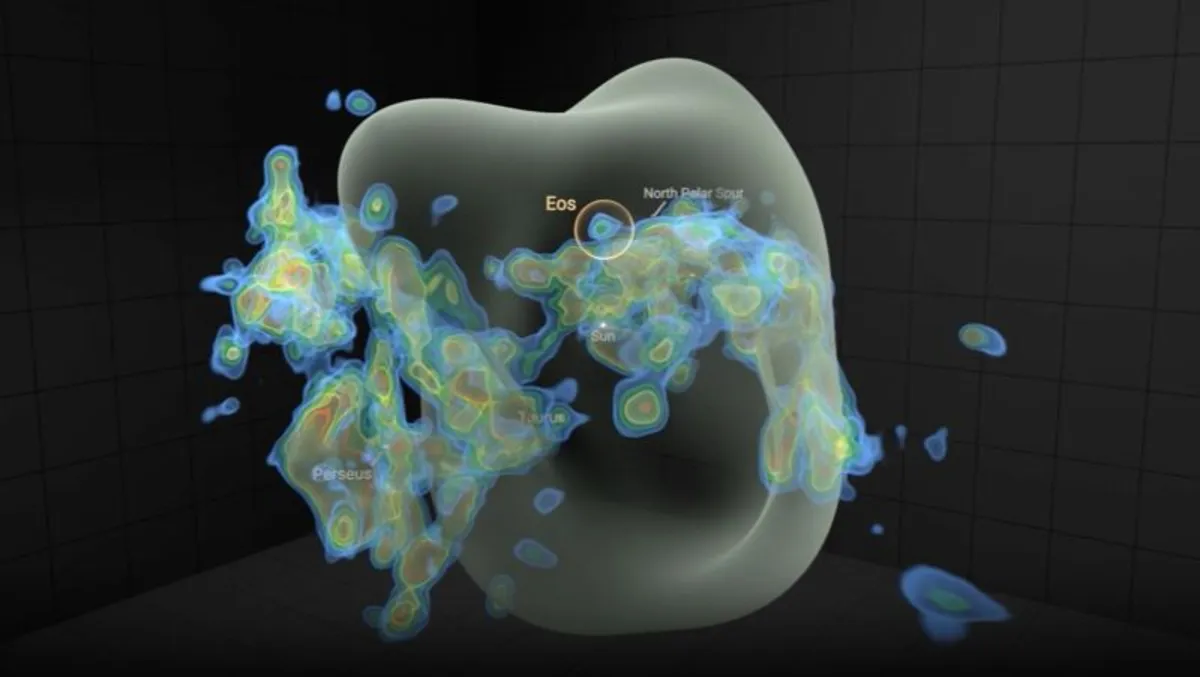
Sign up for CNN’s Wonder Theory science newsletter to explore the universe with captivating news on discoveries, advancements, and more. Recently, astronomers have made an astonishing discovery: an invisible molecular cloud named Eos, after the Greek goddess of dawn, has been detected surprisingly close to Earth. This cloud is so vast that if it were visible to the naked eye, it would appear enormous in the night sky, measuring approximately 40 times the width of the moon and weighing around 3,400 times the mass of the sun. This groundbreaking finding was reported in a study published in the journal Nature Astronomy.
According to Thomas Haworth, an astrophysicist at Queen Mary University of London and coauthor of the study, “In astronomy, seeing the previously unseen usually means peering deeper with ever more sensitive telescopes.” He elaborated that the discovery of Eos is remarkable because it resides in our "cosmic backyard" and had previously gone unnoticed. Molecular clouds, like Eos, consist of gas and dust from which essential molecules such as hydrogen and carbon monoxide can form. These dense clumps within molecular clouds can collapse, eventually leading to the formation of young stars.
Typically, scientists identify molecular clouds by utilizing radio and infrared observations to detect the chemical signature of carbon monoxide. Haworth explained that carbon monoxide, which consists of one carbon atom and one oxygen atom, emits light at wavelengths that are easily detectable. Unfortunately, the Eos cloud evaded discovery because it contains minimal carbon monoxide, lacking the characteristic signature that researchers usually rely on.
The breakthrough in detecting Eos came from searching for ultraviolent light emitted by hydrogen within the cloud. “The only reason we managed to catch it in this instance is because we’ve been able to look with a different color of light,” Haworth noted. This detection was made possible through data collected by the far-ultraviolet spectrograph known as FIMS-SPEAR, which operated on a Korean satellite called STSAT-1. The data was made publicly available in 2023, leading lead study author Blakesley Burkhart, an associate professor at Rutgers University, to uncover this remarkable find.
Burkhart stated, “This is the first-ever molecular cloud discovered by looking for far ultraviolet emission of molecular hydrogen directly.” The findings indicated that glowing hydrogen molecules were detected via fluorescence in the far ultraviolet spectrum, highlighting that this cloud is “literally glowing in the dark.” The proximity of the Eos molecular cloud to Earth presents a unique opportunity for scientists to study the mechanisms behind the formation of solar systems.
Burkhart expressed excitement over the discovery, stating, “Our discovery of Eos is exciting because we can now directly measure how molecular clouds are forming and dissociating, and how a galaxy begins to transform interstellar gas and dust into stars and planets.” This finding is crucial as astronomers believed they had a comprehensive understanding of the locations and properties of molecular clouds within approximately 1,600 light-years of the sun. The discovery of Eos, located only 300 light-years away, has come as a surprise to many in the field.
Melissa McClure, an assistant professor at the University of Leiden, who was not involved in the research, commented on the significance of the discovery, saying, “This new molecular cloud, Eos, is only 300 light-years away, which is closer than any of the molecular clouds that we’ve known about previously.” She added, “It’s puzzling why there’s something this big right in our solar neighborhood that we didn’t see before. It would be a bit like living in a suburb with above-ground houses and open lots and suddenly realizing that one of the open lots actually hosts a hidden underground bunker in it.”
As researchers continue to explore the mysteries of the universe, the discovery of Eos opens new avenues for understanding the formation of stars and planets, illuminating the dark corners of our cosmic neighborhood.